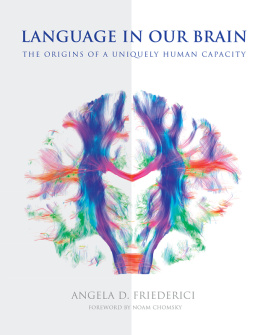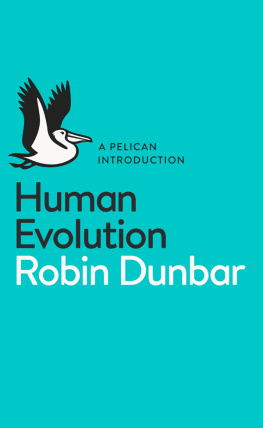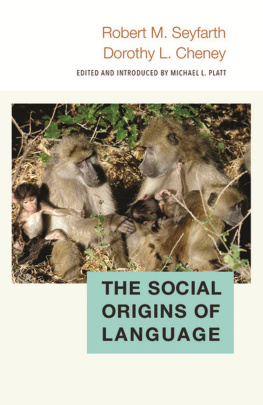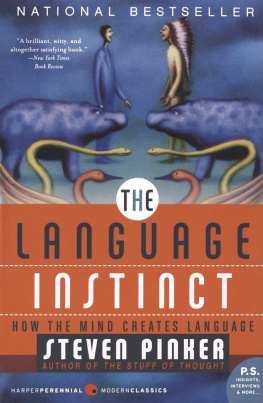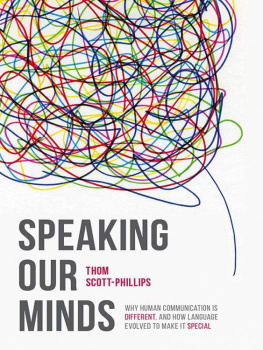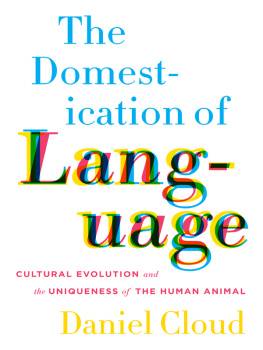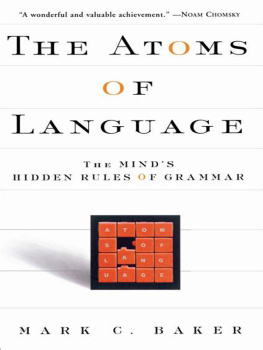The Origins of Language
This short guide to modern empirical research on language evolution provides a breezy and readable introduction to the many issues involved in understanding how humans came to possess one of our most prized capacities: our ability to acquire and use language.
Tecumseh Fitch, University of Vienna
Jim Hurford has produced a work of stunning depth and breadth, expertly condensed in this slim guide. These are notoriously difficult questions: How did the capacity for language evolve in the deep history of our species? How do different languages evolve in the more recent histories of our societies? Hurford is one of the few scholars with the authority and interdisciplinary reach to give us compelling and plausible answers. The Origins of Language is a rare achievement, and highly recommended.
N. J. Enfield, Max Planck Institute, Nijmegen, and University of Sydney
Hurford has written a delightful little book, an ideal point of entry into the range of complex issues facing anyone that wants to understand how human language evolved. Darwin himself would have cherished this guide.
Cedric Boeckx, ICREA/Universitat de Barcelona
No one has thought more deeply about the evolution of the human language faculty than James Hurford, and no one writes about the topic more engagingly. In this book he explains and synthesizes the most important findings concerning language evolution from across a wide variety of scientific disciplines, including linguistics, biology, ethology, psychology, and cognitive science. His writing is always grounded in evidence-based argumentation, yet is informative and clear for the nonspecialist reader. To introduce in such a short work all the major aspects of the evolution of languagefrom the beginnings of a special human type of communication to the emergence of sound systems, through meaning to symbolic words to sentence structureis an impressive feat. To make it not only thorough but thoroughly readable is a real achievement. A lovely little book: great fun, cogent, and scientifically solid.
Maggie Tallerman, Newcastle University
James R. Hurford is Emeritus Professor at the University of Edinburgh, where he was previously Professor of General Linguistics from 1979 until his retirement in 2009. Over the last 25 years he has pioneered the rebirth of serious scientific interest in the origins and evolution of language. He co-founded with Chris Knight the biennial international conferences on the evolution of language (known as EVOLANG), with Simon Kirby the Language Evolution and Computation Research Unit at the University of Edinburgh, and with Kathleen Gibson the OUP series on language evolution. His previous publications include The Origins of Meaning (OUP 2007) and The Origins of Grammar (OUP 2011).
The Origins of Language
A Slim Guide
James R. Hurford


Great Clarendon Street, Oxford OX2 6DP,
United Kingdom
Oxford University Press is a department of the University of Oxford.
It furthers the Universitys objective of excellence in research, scholarship, and education by publishing worldwide. Oxford is a registered trade mark of Oxford University Press in the UK and in certain other countries
James R. Hurford 2014
The moral rights of the author have been asserted
First Edition published in 2014
Impression: 1
All rights reserved. No part of this publication may be reproduced, stored in a retrieval system, or transmitted, in any form or by any means, without the prior permission in writing of Oxford University Press, or as expressly permitted by law, by licence, or under terms agreed with the appropriate reprographics rights organization. Enquiries concerning reproduction outside the scope of the above should be sent to the Rights Department, Oxford University Press, at the address above
You must not circulate this work in any other form and you must impose this same condition on any acquirer
Published in the United States of America by Oxford University Press
198 Madison Avenue, New York, NY 10016, United States of America
British Library Cataloguing in Publication Data
Data available
Library of Congress Control Number: 2013945732
ISBN 9780198701668 (hbk)
9780198701880 (pbk)
As printed and bound by
CPI Group (UK) Ltd, Croydon CR0 4YY
Links to third party websites are provided by Oxford in good faith and for information only. Oxford disclaims any responsibility for the materials contained in any third party website referenced in this work.
For Rosie and Sue, and in Eves memory.
This Slim Guide aims to be non-technical, readable, and short, while still conveying what is unique and special about language and its continuity with non-human life. It shows the tips of many icebergs, which can be explored by further detailed reading, suggestions for which are given at the end of the book.
Contents
1
The prehistory of a very special ape
In this chapter I make a flying start, compressing millions of years, from the first bipedal ape to the first Homo sapiens, into a few pages. Some of the history of our lineage is now well agreed, but many details are uncertain, debated, and open to revision by the next fossil discovery. In outline, the history goes from the split with the chimpanzee lineage about 7 million years ago, through Australopithecine apes, through two Homo species, habilis and erectus, to the emergence of our own species about 200,000 years ago. From the scant fossil remains, we know a little about our remote ancestors sizes and shapes, and for the more recent ones even just a little about their ways of life. In the last few years, it has been possible even to infer, albeit speculatively, a little about their ways of communicating, as we shall see later in this book. Researchers sometimes suggest that Homo erectus, a tall, robust ape from about 1.5 million years ago, may have had a protolanguage, a meaningful learned vocabulary but no grammarjust words strung together. We have no direct way of knowing whether this was the case, but recently acquired knowledge does tend to point in that direction. Noam Chomsky has dismissed all talk of language evolution as fairy stories. There are no fairies in this book, nor any other imaginary entities. We will reason only from real brains, real genes, real vocal tracts, real acoustic patterns, real fossils, and real social interaction, in humans or other animals. Indeed, we can only speculate about how and why languages and the human capacity for language got to be the way they are. We cant travel back in time to observe, and there are no literal echoes of people speaking way back then. This applies to all speculation about the past, from the geological formation of the earth to what happened right after the Big Bang that made the universe. There are better and worse stories, in terms of internal coherence, economy, and consistency with available facts.
Researchers in language evolution try to collect as much relevant information as they can from genetics, child language development, neuroscience, palaeontology, anthropology, comparative psychology, linguistic typology, historical linguistics, and computer modelling to build as coherent a picture as possible of how and why languages and the unique human capacity for language evolved. The interdisciplinary nature of the quest is challenging and exciting in itself. I hope this book will persuade you that sensible things can be said about language origins and evolution. We will not be able to answer many When? questions, such as when words or complex sentences were first used. To any Where? question, the only, very vague answer is Somewhere in Africa. Just as important are the How? and Why? questions. Considering these questions adds satisfyingly to our understanding of what language is. We will see language in the light of evolutiona perspective interestingly different from other views. Some knowledge of our prehistory after diverging from the other apes is useful as background, and I will now whizz through those seven million years, summarizing consensus views and noting what we can glean from the palaeontological record, relevant to the origins of language.
Next page

